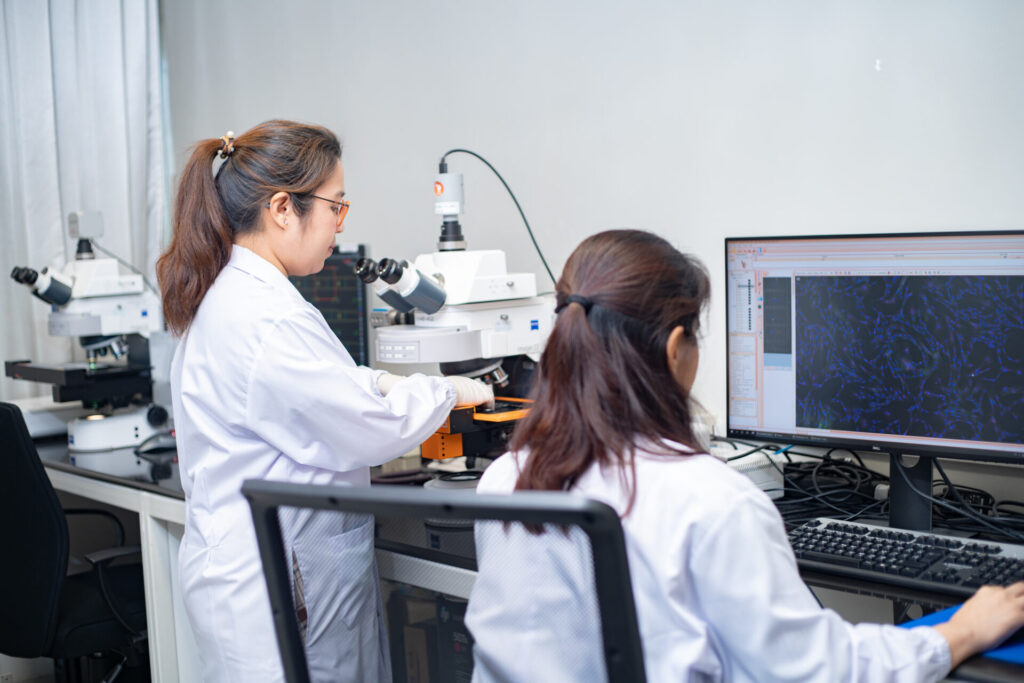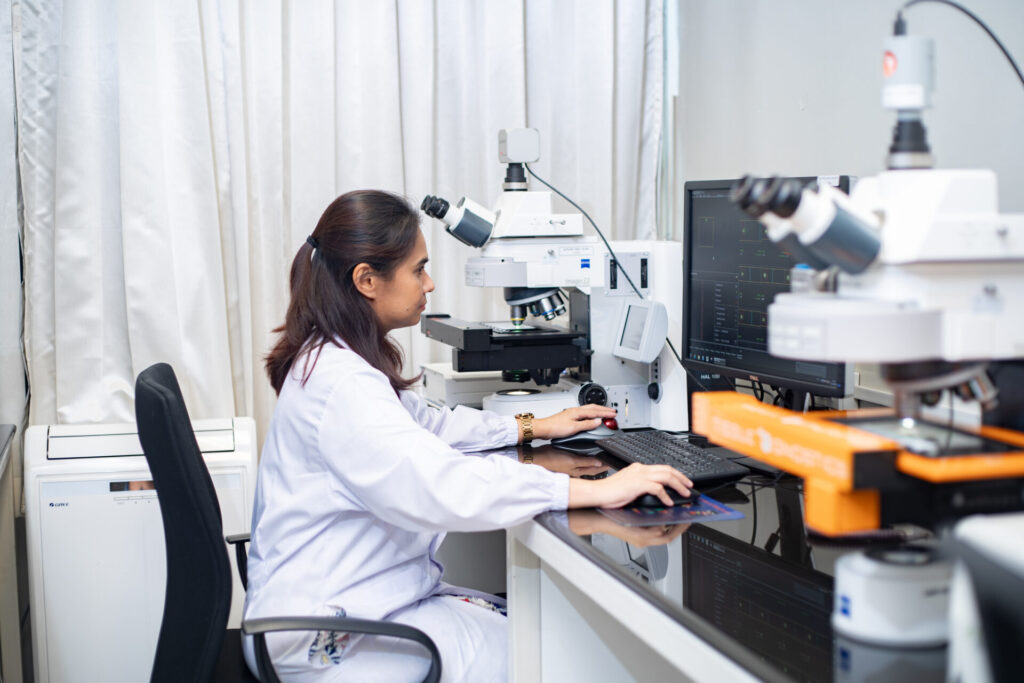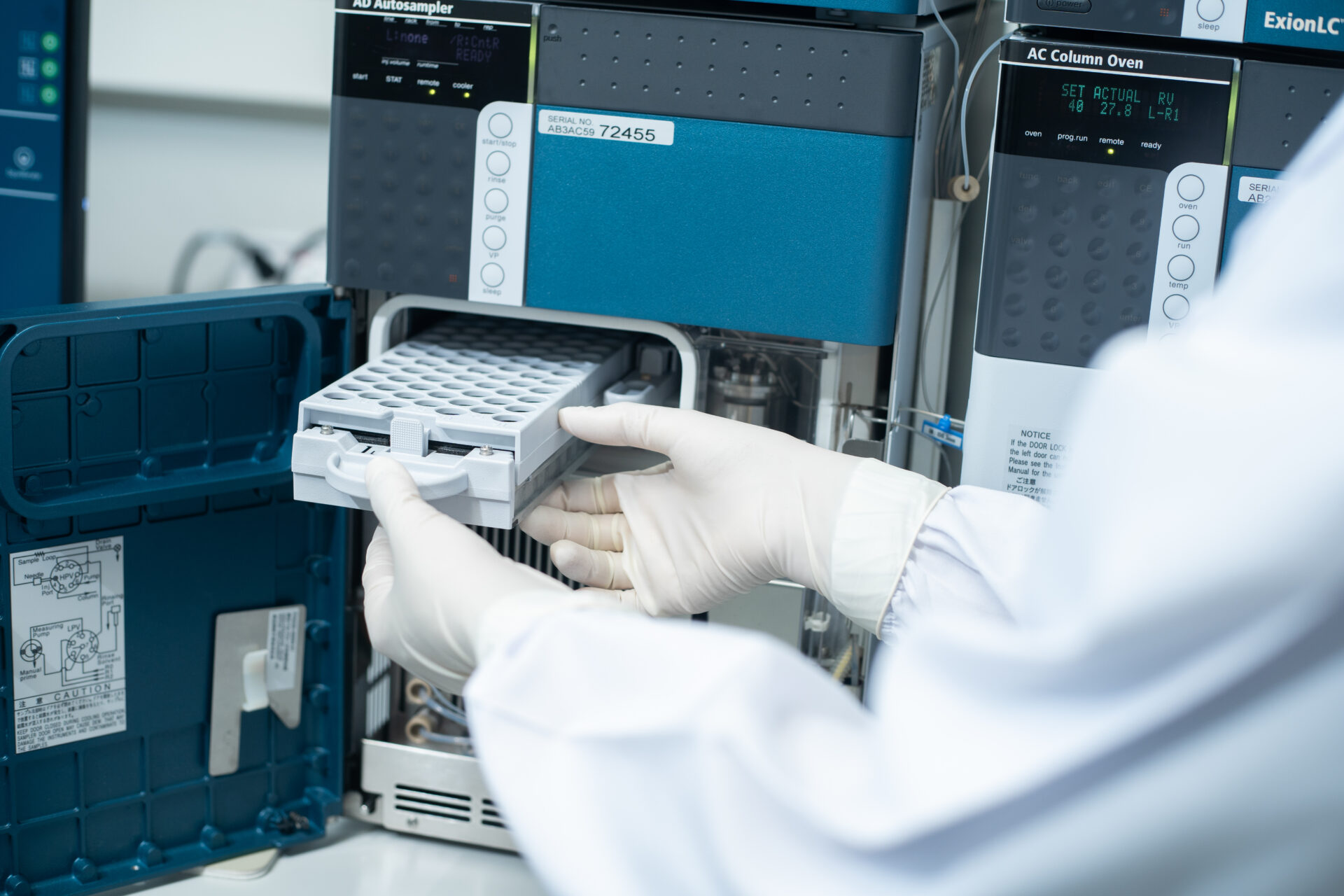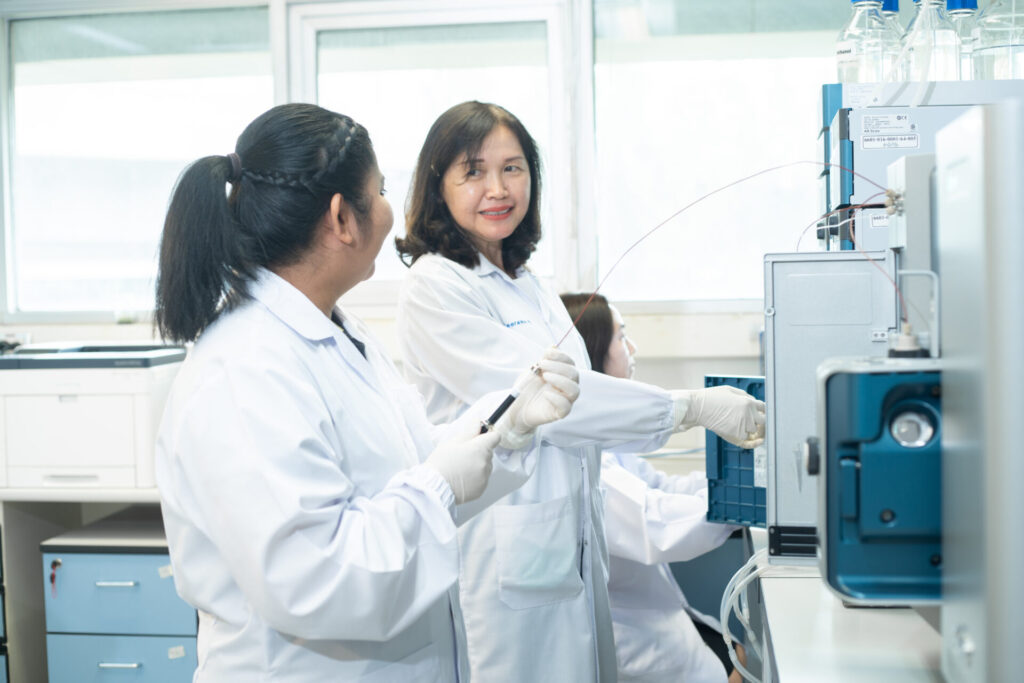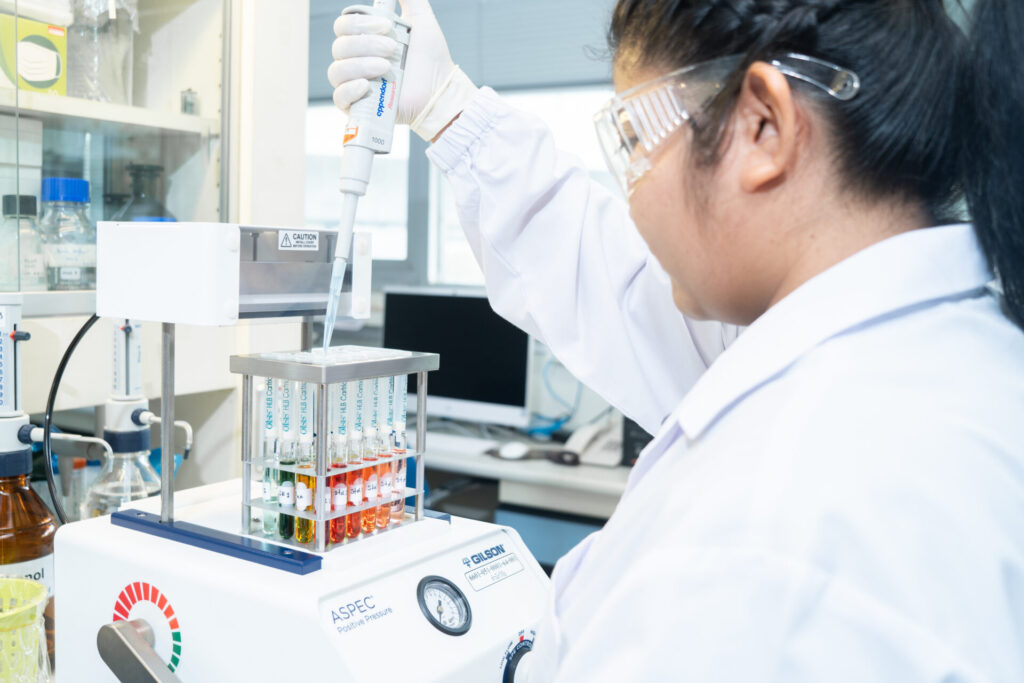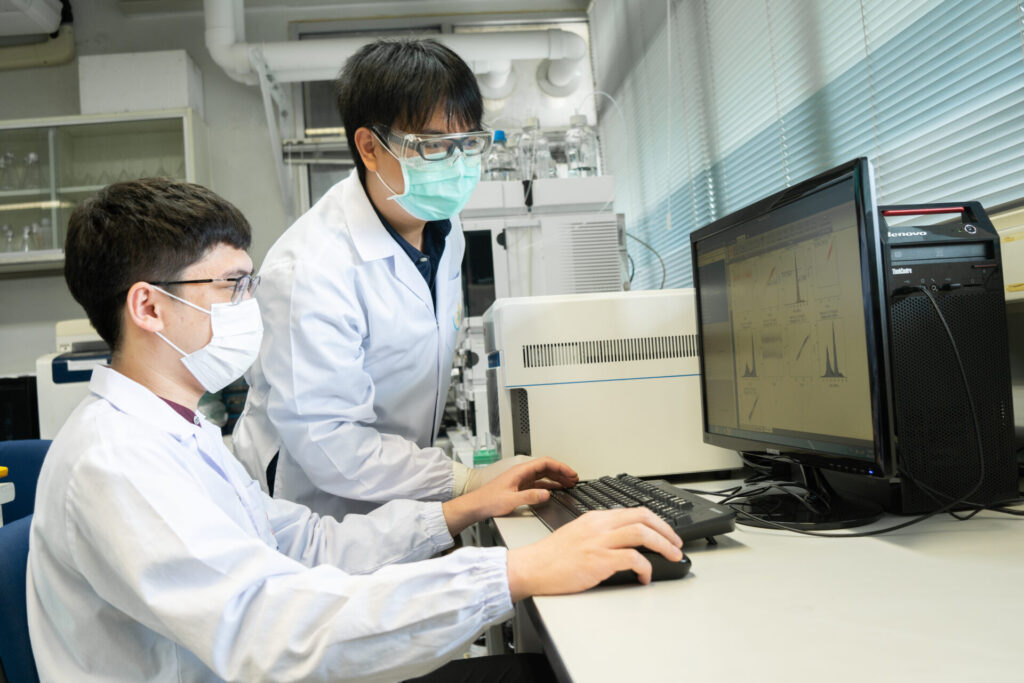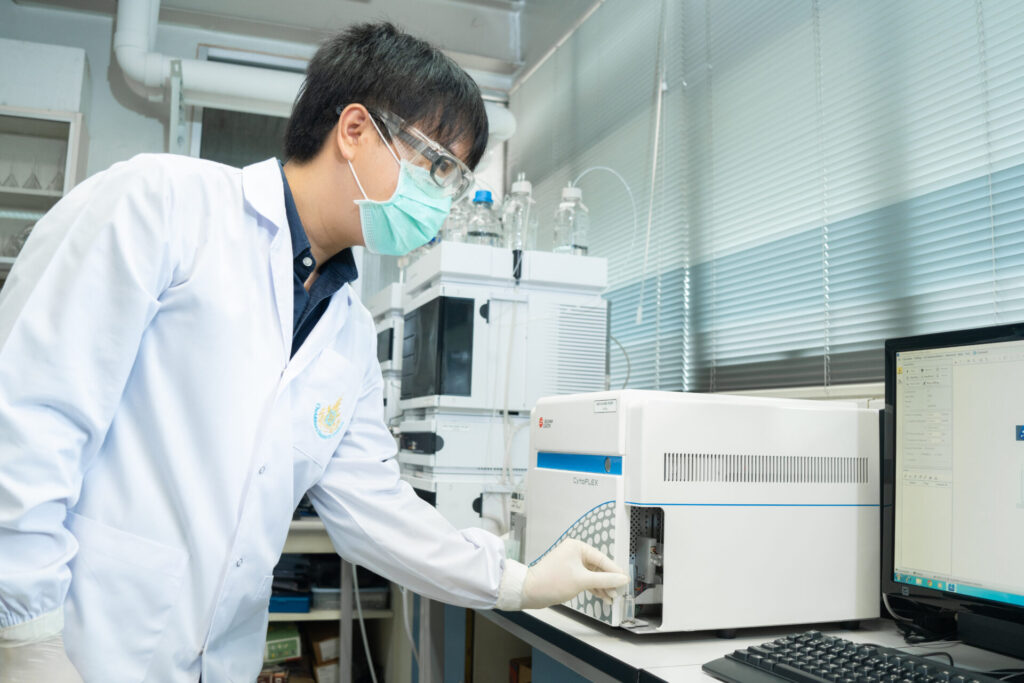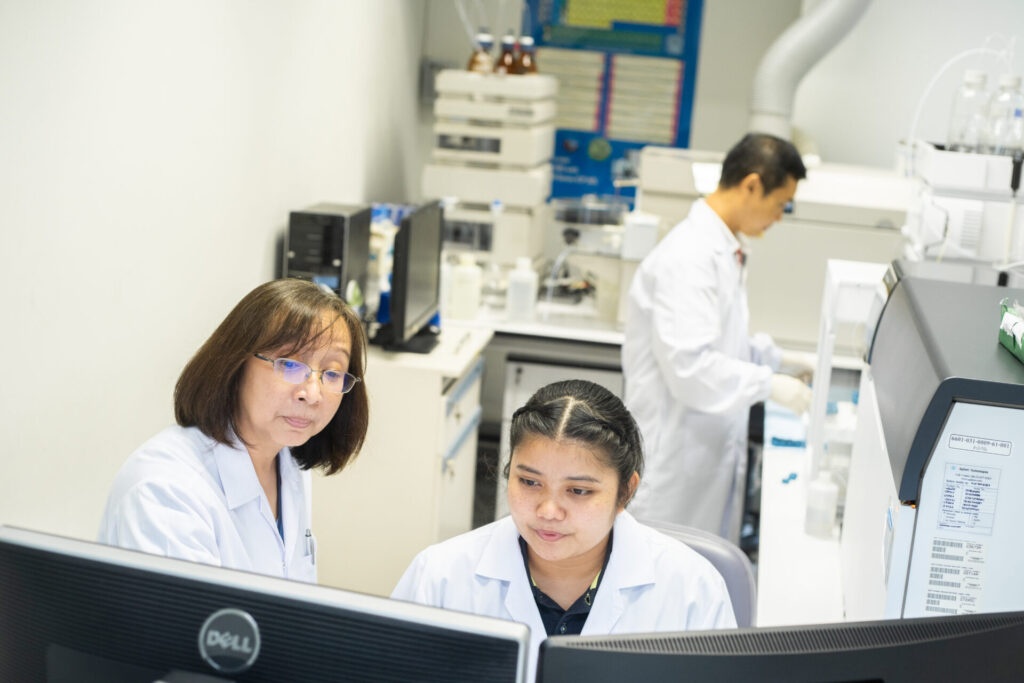Health impacts of arsenic exposure in utero.
Arsenic is an environmental pollutant that is classified as a human carcinogen by the International Agency for Research on Cancer (IARC). It is found naturally in the environment and is also used as a therapeutic agent in pigs and chickens, as well as a pesticide. In Thailand, arsenic contamination in the environment is mainly because of tin mining, leading to contamination of food and drinking water. In animal experiments, arsenic has been shown to cross the placenta to the developing embryo and lead to cancer later in life (i.e., adulthood).
The Chulabhorn Research Institute has conducted research on the impacts of exposure to arsenic in pregnant mothers on gene expression in infants. Tissue samples were collected from mothers and newborns from Ronpibul district, Nakhon Sri Thammarat province, an area known to be contaminated with arsenic. Results showed that newborns from mothers in the study area had elevated levels of arsenic in their hair and nails, compared to newborns from a control site. This was also the first published study to show differential expression of 11 genes that were identified as promising markers for arsenic exposure. These genes are involved in apoptosis, cell signaling, inflammation and stress responses. Additionally, it was found that levels of DNA methylation in the promoter region of the p53 gene were associated with levels of arsenic detected in the nail samples collected from the newborns. It is hypothesized that these changes in levels of DNA methylation and gene expression may lead to biological changes that manifest as disease later in life. The study on differential expression of the 11 genes that were identified as promising markers for arsenic exposure was published in PLoS Genetics in 2007 and selected as one of the top fifteen research papers by the US National Institute of Environmental Health Science (NIEHS).
Follow-up studies in children exposed in utero have found that these children are at increased risk for development of various diseases later in life, including cancer, due to various types of genetic damage. The research project aims to identify ways in prevent the health impacts of arsenic, partly by looking at effects of exposure on cell differentiation, to try to identify molecular mechanisms that might provide insight into cancer risk. Results have shown that methyl donors, e.g., S-adenosyl methionine (SAM) and folic acid, are able to reduce the toxicity of arsenic by reducing expression of genes involved in inflammation and DNA damage. Folic acid, which is a nutritional methyl donor, is therefore of interest for its potential in preventing or reducing toxic effects of arsenic exposure in susceptible populations.
